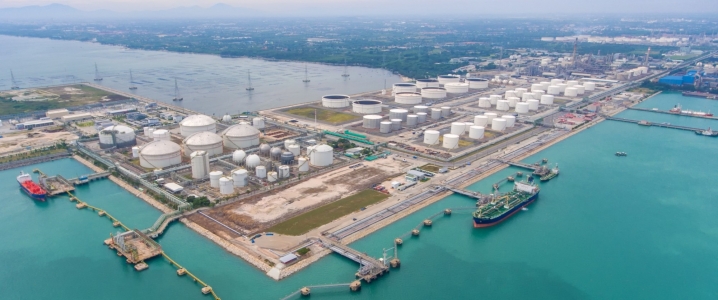What a difference one month makes.
One month ago, the International Energy Agency (IEA) warned that the world was “straining parts of the system to the limit,” noting that “recent production increases come at the expense of spare capacity,” and that the “strain could be with us for some time and it will likely be accompanied by higher prices.”
In the IEA’s most recent Oil Market Report, released on Wednesday, the Paris-based energy agency welcomed the fact that OPEC+ rose to the occasion and added more supply to a market that was rapidly tightening. “Producers have heeded the warnings and more than met the challenge and today, the Big Three, Russia, Saudi Arabia and the United States, all see output at record levels,” the IEA wrote.
Oil prices are back down to “more reasonable” levels, which should provide relief for consumers, a particularly welcome development for emerging markets that have seen their currencies rocked this year. The IEA maintained its demand growth figure at 1.3 mb/d for 2018 and 1.4 mb/d for 2019, despite an uncertain outlook for the global economy.
The agency noted that global production has accelerated, and those gains, combined with a more lenient-than-expected White House regarding Iran sanctions, could lead to an increase in inventories by an average of 0.7 million barrels per day (mb/d) in the fourth quarter. That comes on the heels of four consecutive months of inventory builds from within the OECD, suggesting that supply very much exceeds demand, and has for some time now. Related: Oil Prices Plunge Below $15 In Canada
Because non-OPEC production (i.e. U.S. shale, Canada, and Brazil) will grow rapidly over the next few months, the IEA says that inventories could build at a rate of 2 mb/d in the first half of 2019. That goes a long way to explaining the recent meltdown in oil prices.
But that also is a baseline assumption that does not take into account any production cuts from OPEC+, which at this point, is almost certainly in the offing. The only question is by how much the group will be reducing. Saudi Arabia said that it alone would slash 500,000 bpd in December. Russia was a bit more non-committal in recent days, but the utter meltdown in prices on Tuesday – down 7 percent – could spur a more concerted effort.
Indeed, the size of the OPEC+ production cut seems to have grown significantly this week, growing larger with each passing day as oil prices continued their descent. On Monday, it was the Saudis that made headlines with the promised 500,000-bpd cut, while reductions from the rest of the group were unclear. By Tuesday, there seemed to be some rumors regarding a matching 500,000 bpd from the rest of OPEC+ for a combined cut of 1 mb/d.
But after the sharp selloff on Tuesday, putting Brent back into the mid-$60s and WTI in the mid-$50s, top OPEC+ officials seem to be growing more concerned. Reuters reports that OPEC+ is now considering a cut of 1.4 mb/d for 2019. In reality, they may have discussed this option last weekend along with other options at the meeting in Abu Dhabi, but it does not seem to be a coincidence that news of this larger plan surfaced a day after one of the sharpest declines in oil prices in a long time. “I believe a cut of 1.4 million bpd is more reasonable than above it or below it,” an OPEC source told Reuters. Related: The World's Most Important Oil Region
For now, Russia is playing it cool. Russian energy minister Alexander Novak said no emergency action was needed. “The market is quite volatile today. We remember that the oil price was sharply rising in the same way, now it is going down. We have to look into long-term development, into how the price will be stabilized,” he said on the sidelines of a conference in Singapore, according to Reuters. “It’s not right for market participants to react to any one-off fluctuations,” he said.
The IEA too suggested that the building of inventories, which could accelerate, is not the worst thing in the world. In an uncertain and volatile market, higher inventories could be “a form of insurance,” the agency said, noting that the U.S. still wants Iran’s oil exports at zero, and that ongoing violence and instability in Libya, Nigeria and Venezuela keep open the possibility of more dramatic outages.
However, for oil exporting countries, the meltdown in oil prices – down nearly 25 percent in a little over a month – is not something they welcome. That likely ensures a sizable cut will be announced in Vienna in about three weeks’ time.
By Nick Cunningham of Oilprice.com
More Top Reads From Oilprice.com:
- Significant Crude Build Weighs On Oil Markets
- Are Oil Markets Overreacting?
- Bakken Prices Crumble On Pipeline Woes


















